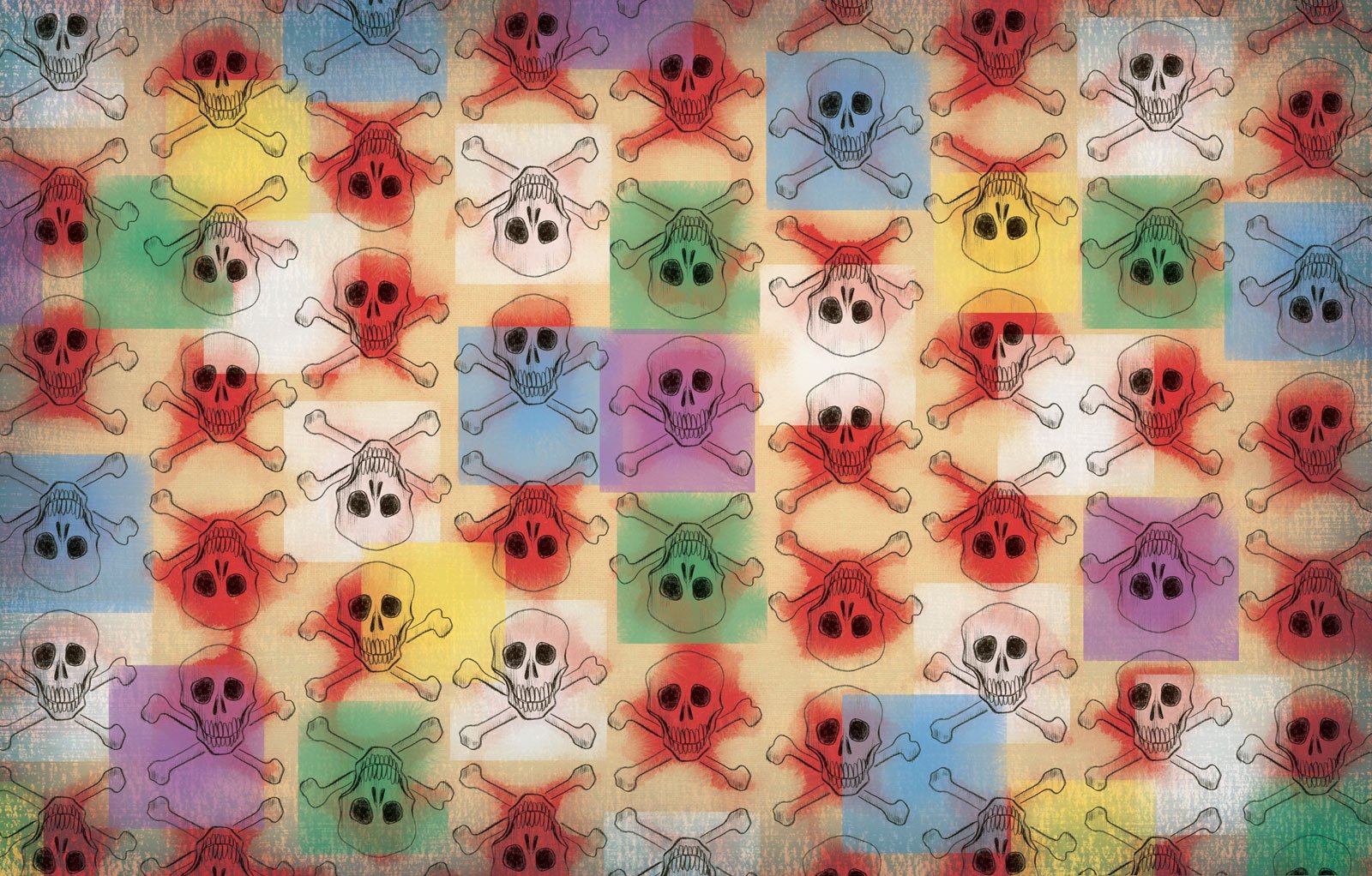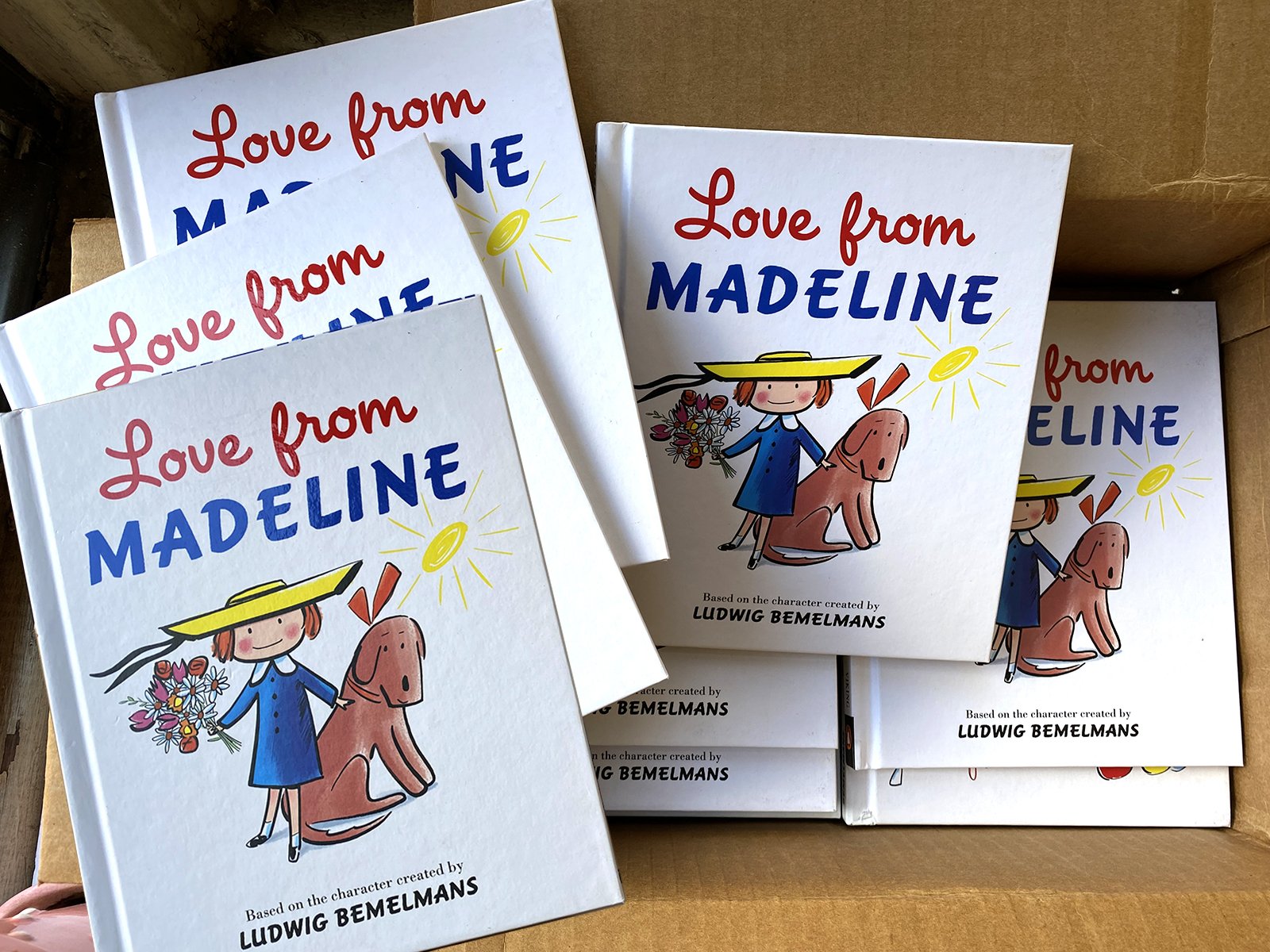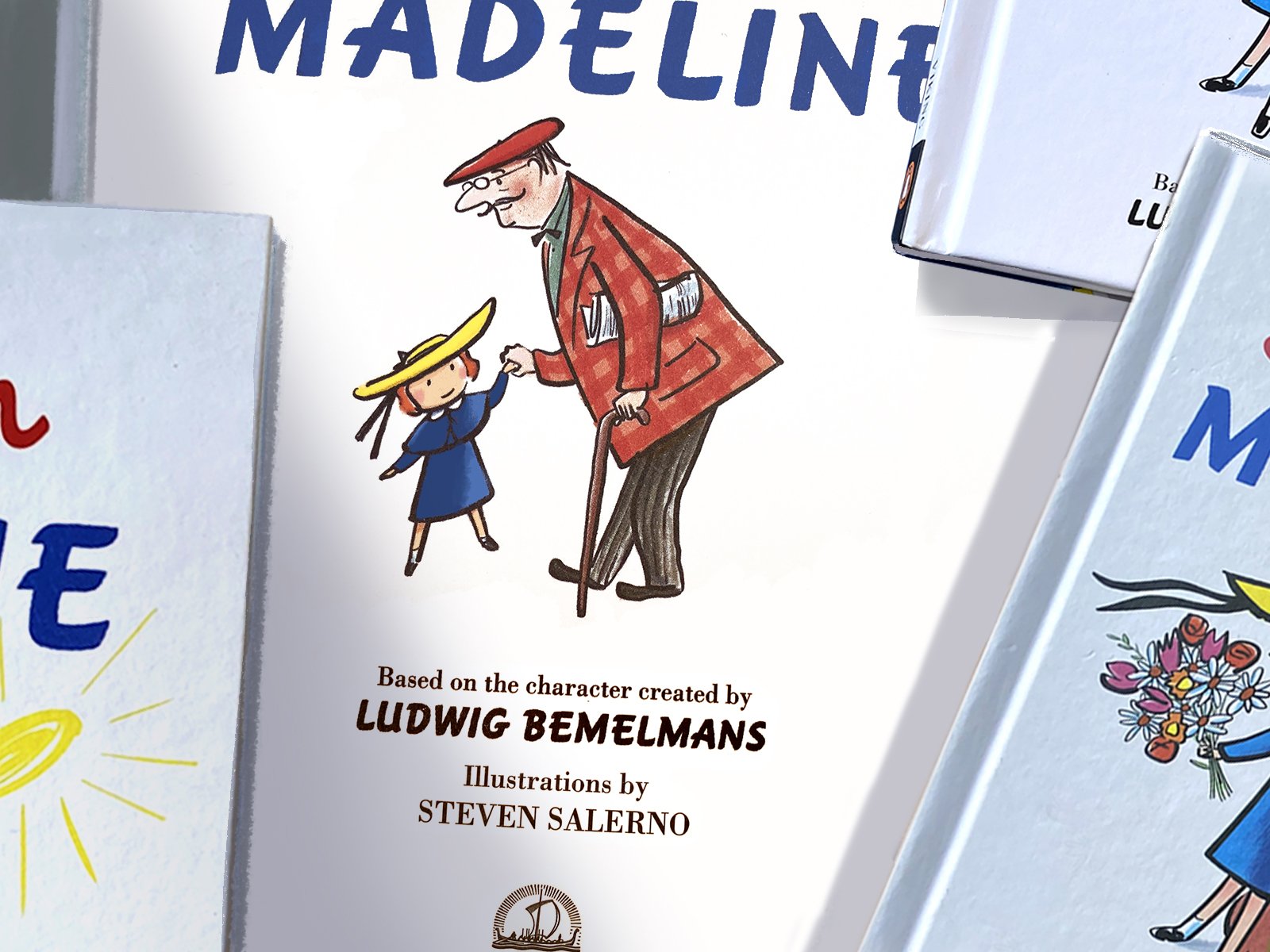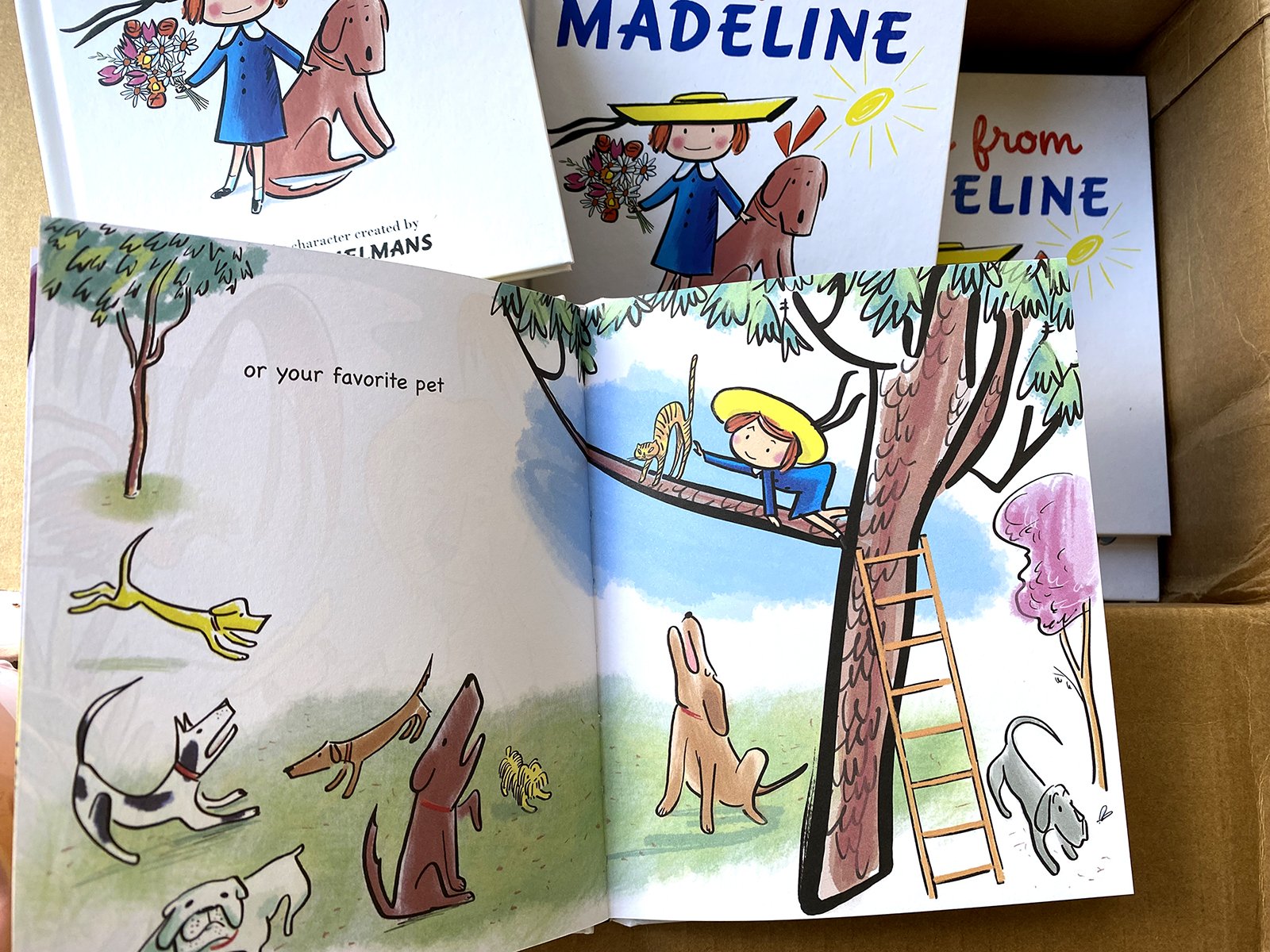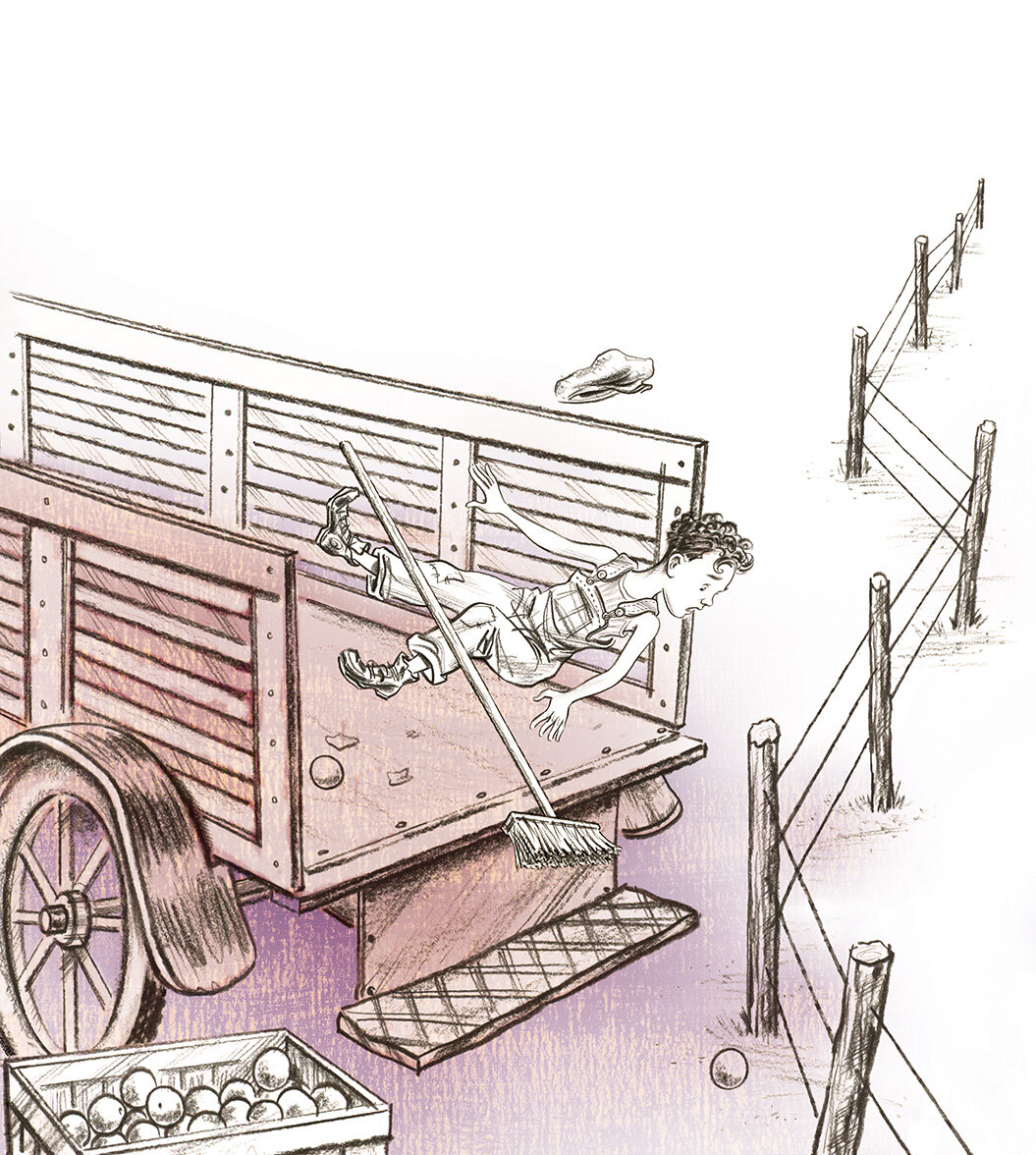-detail of an illustration from MADELINE Says Be Kind -Miss Clavel, Madeline and the girls heading to school early in the morning -5th in the series of 5 new MADELINE picture books & board books from publisher Viking Press (Penguin/Random House) and illustrated by Steven Salerno -in the illustration style of the famed originator of the Madeline character, Ludwig Bemelmans. Note: MADELINE Says Be Kind will be released in Spring 2025.
Back in 2020 I signed the contract with publisher Viking (Penguin Random House) to engage in a very interesting picture book project -to illustrate a series of 5 new mini picture books & board books featuring one of the most well known and beloved characters in all of picture book history, MADELINE. Yes that Madeline! The classic 1939 picture book (and still a best seller today) with the famous opening line: “In an old house in Paris that was covered with vines lived twelve little girls in two straight lines.” (The brave, charming little girl in the yellow hat living in an old Paris boarding school along with eleven other girls, and always under the watchful eye of the towering Miss Clavel.
Read more detail about my involvement with this special MADELINE project.
For these new titles I created all the illustrations in the style of the famed originator of the Madeline character, author/artist Ludwig Bemelmans. All 5 of these new MADELINE titles are written by John Bemelmans Marciano, the grandson of Ludwig Bemelmans.
The first four titles in this new MADELINE series have already been completed, published, and released… And the 5th and final title, MADELINE Says Be Kind, was delayed considerably due to the story manuscript not being finalized on schedule, and was not in my hands until Spring 2024. Update: I just recently completed all the final illustrations for this 5th book, and it’s being released by the publisher in Spring 2025.
FYI: For those who don’t know Ludwig Bemelmans (born 1898 - died 1962), he was a well established illustrator/travel writer who had already penned & illustrated a number of picture books for children when in 1939 his little gem of a picture book entitled, MADELINE was first released. It grew into a hit, striking a popular note with both children and adults and over the years became one of the most loved and memorable characters in children’s picture book history. The first Madeline picture book in 1939 was followed by four more Madeline titles before Bemelmans’ death in 1962, then with a sixth title released posthumously.
-detail of an illustration from MADELINE Says Be Kind -Madeline sharing her cookies in the park -5th in the series of 5 new MADELINE picture books & board books from publisher Viking Press (Penguin/Random House) and illustrated by Steven Salerno -in the illustration style of the famed originator of the Madeline character, Ludwig Bemelmans. Note: MADELINE Says Be Kind will be released in Spring 2025.
These MADELINE books were released in the following order:
(1) Love from Madeline -released April 2022
(2) Madeline’s ABCs -released June 2022
(3) Madeline’s 123s -released Nov 2022
(4) Madeline’s SEASONS -released Spring 2023
(5) Madeline Says Be Kind -to be released Spring 2025
-detail of an illustration from MADELINE Says Be Kind -Madeline visiting an elderly neighbor -5th in the series of 5 new MADELINE picture books & board books from publisher Viking Press (Penguin/Random House) and illustrated by Steven Salerno -in the illustration style of the famed originator of the Madeline character, Ludwig Bemelmans. Note: MADELINE Says Be Kind will be released in Spring 2025.

















